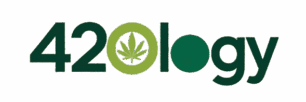The Complete Guide to 420 Culture: History, Meaning, and Modern Impact
Introduction: What is 420?
420 (pronounced four-twenty) is more than just a number to cannabis enthusiasts — it’s a cultural phenomenon, a rallying cry, and a day of unity for millions around the globe. From humble beginnings as a secret code to a global cannabis holiday on April 20th, 420 has evolved into a symbol of marijuana advocacy, celebration, and identity.
Whether you’re a seasoned smoker or just curious about cannabis culture, understanding the origins and evolution of 420 is key to appreciating how deeply it’s rooted in marijuana history.
The Origins of 420: A Hidden Code
The Waldos and the Birth of 420
The story begins in 1971 at San Rafael High School in Marin County, California. A group of five high school students — who called themselves “The Waldos” — would meet at 4:20 p.m. by a statue of Louis Pasteur after school to search for a rumored abandoned cannabis crop. They used “420” as their code to coordinate meetups discreetly.
Though they never found the crop, the term stuck. “420” became their shorthand for smoking weed, and it slowly began to spread through the counterculture.
The Grateful Dead Connection
The Waldos had ties to members of the Grateful Dead, a legendary rock band with deep roots in the countercultural movement of the 1960s and 70s. As the band toured the U.S., so did the term “420,” traveling by word-of-mouth among Deadheads (fans) and weed lovers alike.
By the 1990s, High Times magazine helped further popularize 420 by referencing it in publications and promoting April 20th as a day to celebrate cannabis.
April 20th: The Global Cannabis Holiday
What Happens on 4/20?
April 20 (4/20) is now recognized worldwide as Cannabis Day — a time when smokers gather to light up at 4:20 p.m., participate in rallies, attend festivals, and advocate for legalization and social justice. Major cities like Denver, San Francisco, Vancouver, and Amsterdam host massive public events drawing thousands of cannabis users and supporters.
From Protest to Celebration
Initially, 4/20 was a day of protest, focusing on cannabis criminalization and civil rights. While activism remains core, the day has also become a celebration of cannabis culture, diversity, and entrepreneurship. From product launches to educational panels, the 420 holiday reflects how mainstream cannabis has become.
What 420 Represents Today
A Symbol of Freedom and Rebellion
420 remains a badge of identity for cannabis users and advocates. It’s a symbol of resistance against outdated laws, misinformation, and stigma. It celebrates personal freedom and the right to make informed choices about cannabis use.
Cannabis Community & Connection
420 isn’t just about getting high — it’s about community. Whether it’s online forums, smoke sessions, or large gatherings, the culture promotes openness, sharing, and a sense of belonging.
Economic Impact
The cannabis industry has exploded into a multi-billion-dollar market, and 420 has become a commercial milestone. Dispensaries and cannabis brands see huge sales spikes around April 20th, offering discounts, giveaways, and special events.
420 Misconceptions
It’s Not a Police Code
Contrary to urban legend, “420” is not a police radio code for marijuana-related activity. That myth likely helped obscure the true origin, adding mystique but spreading misinformation.
Not Everyone Who Smokes Cares About 420
While many cannabis users celebrate 420, some see it as a marketing gimmick or find the hype overblown. As cannabis becomes more commercialized, some fear the original spirit of rebellion and unity is getting lost.
The Evolution of Cannabis Culture
Legalization and Normalization
Cannabis has come a long way from the shadows. Over 20 U.S. states have legalized recreational use, and many more allow medical marijuana. Countries like Canada, Uruguay, and Germany have led the way in global reform.
420 helped pave the way for these changes by bringing cannabis into public consciousness and forcing a conversation about prohibition, social equity, and personal rights.
Diversity in Cannabis Culture
Today’s cannabis community is more diverse than ever, including people of all races, genders, professions, and age groups. From medical patients and veterans to artists and entrepreneurs, the modern face of cannabis culture reflects inclusivity and intersectionality.
The Role of Media and the Internet
With platforms like Reddit, Instagram, TikTok, and YouTube, cannabis content has exploded. Memes, tutorials, reviews, and news all contribute to the digitization of 420 culture. Social media influencers, “weed-tubers,” and podcasts are driving awareness and reshaping perceptions.
420 and Social Justice
While legalization is spreading, inequities remain. Many people — especially from Black and brown communities — are still serving prison sentences for cannabis offenses in regions where it’s now legal.
Organizations like Last Prisoner Project, NORML, and MCBA (Minority Cannabis Business Association) use 420 as a platform to push for restorative justice and support minority-owned cannabis businesses.
420 in Pop Culture
Movies like Pineapple Express, Half Baked, and How High, as well as artists like Snoop Dogg, Wiz Khalifa, and Bob Marley, have made cannabis a permanent fixture in pop culture. 420 references appear in music, film, fashion, and even art — further embedding the number in mainstream consciousness.
Final Thoughts: Why 420 Still Matters
420 began as an inside joke among teenagers and evolved into a global movement. It’s more than a time to smoke — it’s a moment to connect, reflect, and push for change. Whether you’re lighting up alone or marching in protest, 420 unites cannabis lovers under a shared symbol of freedom, resistance, and community.
At 420logy.com, we honor the legacy and future of 420 by informing, celebrating, and empowering those who love the plant and the culture around it.
